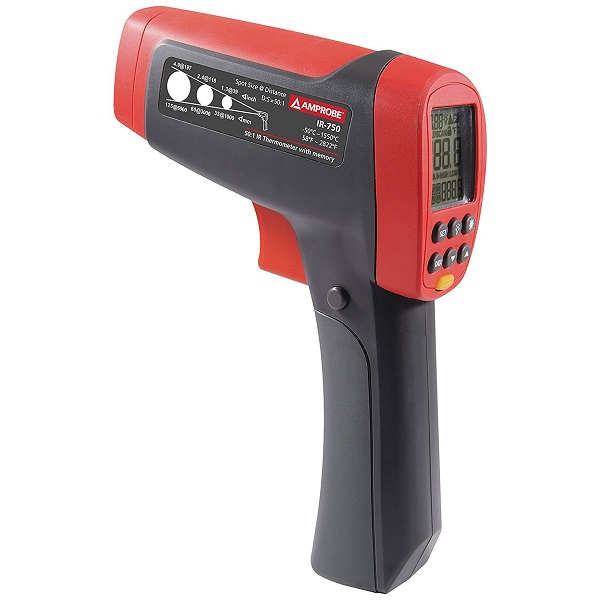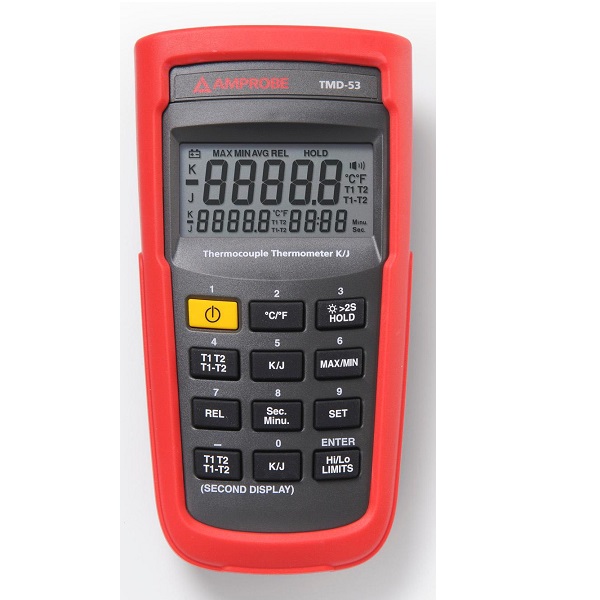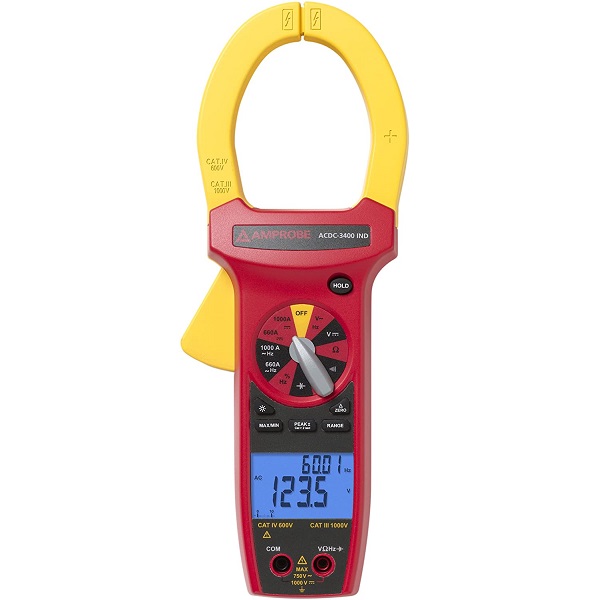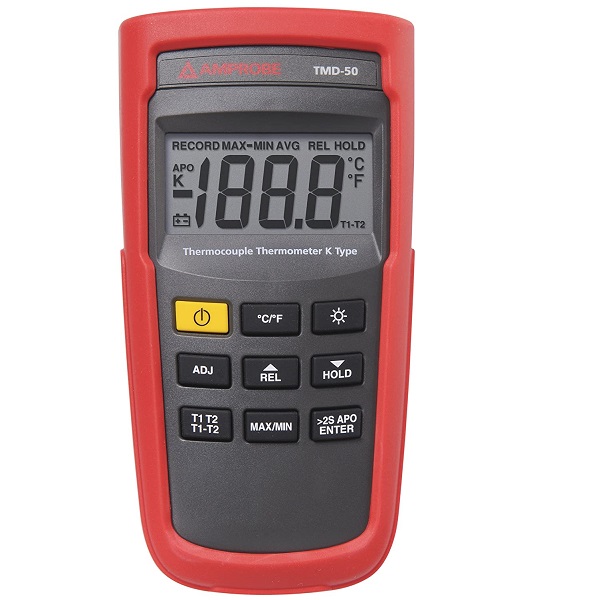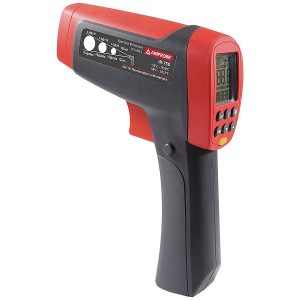| Content | | Amprobe TMD-53W thermometer is a professional choice for HVAC/R technicians, electricians, research, industrial process, and quality control. The dual inputs allow easy super-heat and sub-cool temperature measurement as well as cut-out and in temperature measurements. It also features a large triple backlit display with a basic accuracy of 0.05%. | The Amprobe ACDC-3400 clamp multimeter is CAT IV rated to add an extra level of safety for high voltage, industrial or utility testing applications. It is an AC/DC current clamp meter and a voltage meter all in one. This clamp-on electrical multimeter includes True RMS sensing for accuracy and dependability and extra large jaws to clamp around conductors up to 2? (51 mm) in diameter.
| The Amprobe 15XP-B is the right choice for electronics engineers and field service technicians, featuring TTL logic test for digital circuits, diode test for component level troubleshooting, a special 2000 M? measurement range, and an integrated tilt stand for convenience on the bench. | Eliminate downtime, predict the lifetime of equipment and reduce safety hazards with the Amprobe AMB-110 Insulation Resistance Tester that tests voltage and step voltage to 10,000 V. You can accurately test cables, transformers, motors, surge arrestors and generators in noisy environments such as high voltage switchyards. It also boasts built-in noise rejection filters and shielded test leads to provide high EMI immunity. | Amprobe?s new ACD-21SW Swivel? Clamp Meter features a patented 180-degree rotating head clamp design allowing easy views of measurements in tight or inconvenient to reach places. Simply rotate the body of the clamp meter to get an unobstructed view of the LCD display. Feature rich, measuring AC/DC currents, voltage, resistance and capacitance as well as CAT III 600 V safety ratings make this clamp on meter something you should swivel to see.
|
| Additional information |
| Weight |
1 lbs |
| Dimensions |
10 × 4 × 14 in |
|
| Weight |
2 lbs |
| Dimensions |
9.6 × 6.6 × 2.6 in |
|
| Weight |
2 lbs |
| Dimensions |
12.3 × 5.5 × 3.3 in |
|
| Weight |
2 lbs |
| Dimensions |
10 × 7.8 × 3.1 in |
|
| Weight |
15 lbs |
| Dimensions |
14 × 10 × 15 in |
|
| Weight |
2 lbs |
| Dimensions |
13.4 × 6.9 × 3.8 in |
|
